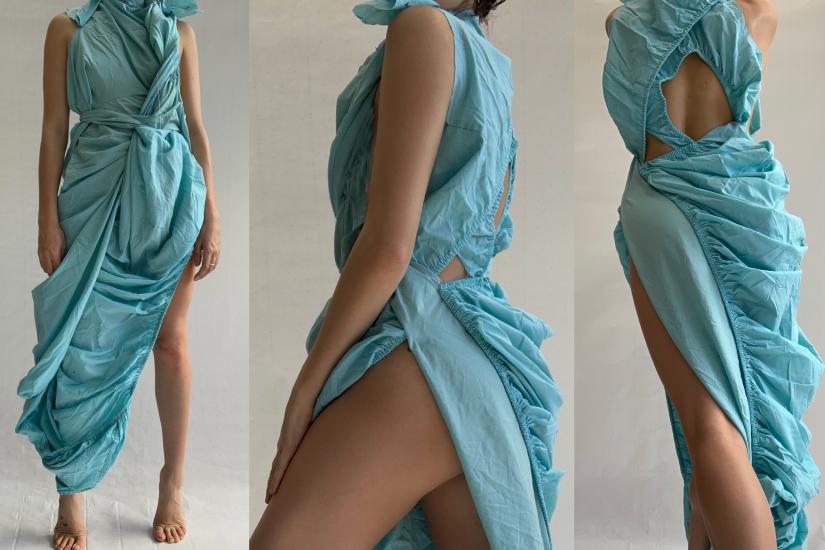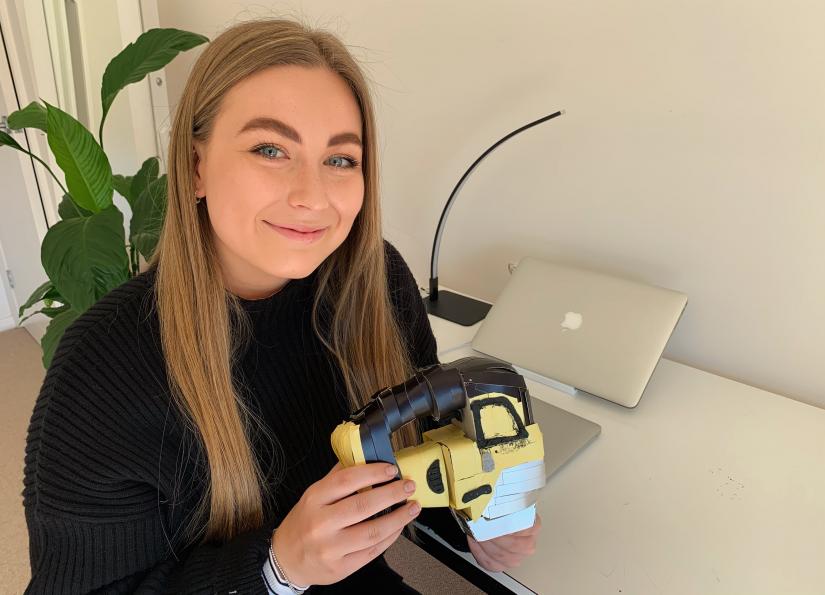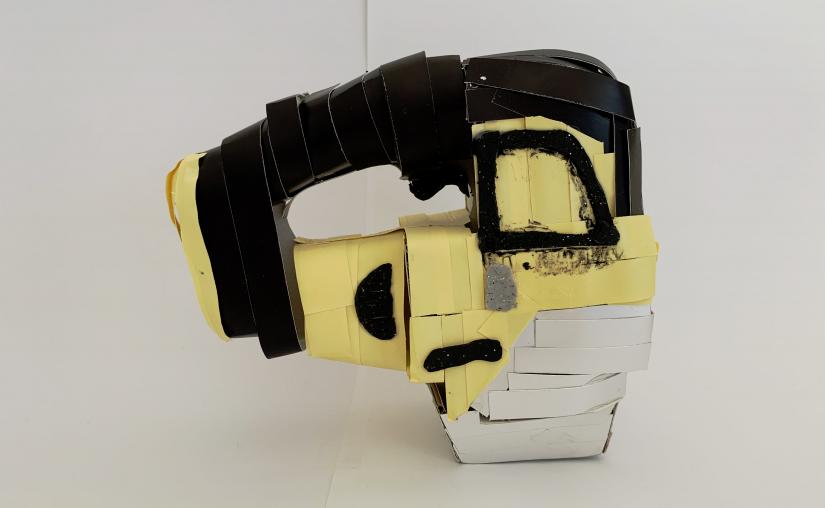Challenge accepted: Creativity from crisis
With the temporary closure of Australia’s university campuses, few students have escaped the flow-on effects of COVID-19 disruptions. But for students in the UTS School of Design, the remote learning experience has delivered some unexpected opportunities.

Fashion & Textiles student Caroline Reznik used a fitted bedsheet modelled on herself for design exploration
Within a month of starting her studies, Caroline Reznik watched as the UTS campus closed, staff and students were sent home, and the era of pandemic-driven online learning began.
An honours student in fashion and textiles, Caroline had enrolled in what she’d thought would be a hands-on course largely conducted in UTS’s state-of-the art fashion and textiles workshops.
Instead, as COVID-19 spread around the world, she found herself at home, communicating with her teachers and peers via Zoom, email and Facebook, and trying to figure out how to complete a fabric draping activity without access to fabric or mannequins.
“Usually I’d order my fabric or go and pick it up from my local supplier or wholesaler in the city, but at the time, everything had shut down,” she says.
Necessity is the mother of invention
Instead, Caroline turned her attention to the contents of her house, and quickly discovered an untapped – and plentiful – source of material.
“I thought, I have fitted bedsheets that haven’t been used in a really long time. It just felt right to use what I already had,” she said.
Sheets in hand and using herself as a mannequin and her iPhone camera on a timer, Caroline put together a rough and ready fashion shoot from the confines of her home. It’s what UTS design students were doing in bedrooms all over Australia: finding solutions and making them work.
According to Alana Clifton-Cunningham, a senior lecturer in the Fashion and Textiles program, the COVID-19 shutdowns have been fertile ground for some of UTS’s most creative student minds. Rather than letting themselves be limited by a lack of access to the tools, facilities and products that normally define their work, students are exploring new materials and modes of creation that are ultimately expanding their practice.
“Fashion design projects often have realised outcomes in the form of physical garments,” Alana says.
“Students were asked to approach their assessment tasks with creativity and resourcefulness and to think about the immediate environment around them as a source of inspiration.”
Everyday materials for sustainable design

Product design student Jenna Goodfellow used leftover paper and cardboard for her design prototype
As well as challenging students to explore new and unexpected materials, the shutdowns also got them thinking about the role of sustainability as a central component of their work, providing a critical shift in thinking in disciplines where re-use isn’t always high on the agenda.
Product design student Jenna Goodfellow, who is waiting out COVID-19 at her family farm in Port Macquarie, was forced to produce a prototype of a handheld kitchen mixer out of leftover paper and cardboard, rather than the modelling foam she’d normally use to develop her ideas.
“I used a particular modelling technique that we’d learnt previously in the degree to help with the project. It was quite flexible, what we were allowed to do, what materials we were allowed to use,” she says.
“I think it’s opened my eyes to using what’s around me rather than sourcing something new – there’s always stuff lying around somewhere that could be of use.”
A creative instinct comes to life
For Jenna, the shutdowns were initially a daunting prospect – everything she’d loved about her course had been centred around the creative and collaborative environment in which she and her peers worked.
Now, however, she’s learning to trust her own design instincts and to engage fully with her own ideas, rather than relying too heavily on feedback and guidance from others.

Jenna Goodfellow's prototype hand mixer was made from paper and cardboard instead of modelling foam
“If I was in the workshop or in the classroom with my peers, I’d be wanting to follow the brief, make it good according to the guidelines and not good according to what I wanted to do,” she says.
Autonomy, self-belief and a hands-on experience of truly independent practice are all learning experiences that that will resonate with students long after COVID-19 is a distant memory.
Says student Caroline Reznik, “We’re really going to come out of this much more confident and independent designers, and I think it’s going to change the way students conduct themselves in the world beyond university.”
This article was originally published in Technology and design.
